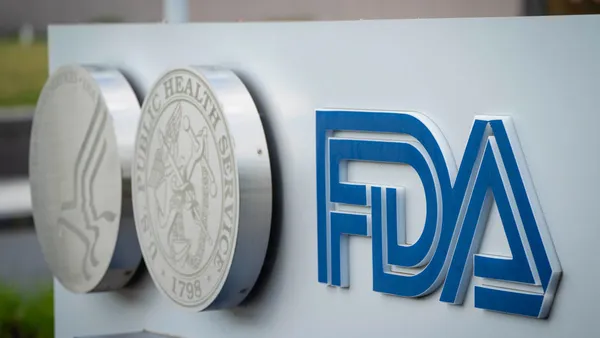When HHS Secretary Robert F. Kennedy Jr. announced that the federal government would no longer recommend COVID-19 vaccines for healthy children or pregnant women, he opened the floodgates to a deluge of confusion, worry and conflicting guidance, even from the agency itself.
Despite the uproar, this change in recommendations might not hamper COVID vaccination rates in the short term, according to Jonathan Roffman, principal and head of pharmaceuticals practice at consulting firm ZS Associates. But the long-term implications are unclear, especially if payers stop covering the shots and vaccine approvals become more restrictive.
“It opens up the possibility, of course, that insurers are not going to pay for it for those not at-risk populations,” he said.
Still, analysts don’t anticipate the new age- and risk-based approach to COVID vaccine recommendations will have a major immediate effect on vaccination rates or even vaccine revenues, since current uptake is already based on a “de-facto” risk-based approach, Roffman said.
“Manufacturers themselves have said they don't anticipate this having a substantial impact on the number of people [who] get vaccinated or the revenue,” Roffman said.
Current vaccination rates hover around 13% for children and pregnant women; and close to one-quarter of all adults, according to the latest CDC data.
“Given the statistics we've seen, I tend to think that most people who are motivated and want to get a vaccine will still be able to do so even with this more restricted, risk-based approach that the government is taking,” Roffman said.
“A number of … vaccine manufacturers are looking at what’s going on and are probably going to pause and reevaluate some of their programs."

Jonathan Roffman
Principal, head of pharmaceuticals practice, ZS Associates
Moreover, guidance from the CDC partially contradicts the new recommendations. Only days after Kennedy’s announcement, the CDC updated its child and adolescent vaccine schedule and still included the COVID vaccine for healthy kids aged six months to 17, albeit with a caveat about “shared clinical decision-making” between parents and providers.
In addition, other bodies have come out swinging against the federal recommendations including Wisconsin, which not only said that its health department continues to recommend the current COVID vaccine during pregnancy and for everyone six months and older, but that Wisconsin Medicaid will cover the vaccine for eligible members.
And although the CDC doesn’t publish the percentage of children who fall into the “high risk” category for COVID, Roffman notes that “the list of risk factors the CDC has published comprises about 74% of the population over age 18,” implying that many children could be considered “high risk” as well.
Whether insurers choose to cover COVID vaccines in the wake of the new recommendations remains to be seen, and Roffman said he’s sure they’re “doing the calculations” to make that determination.
However, it could impact vaccination rates in other ways in the longer term.
“It’ll impact things like vaccine skepticism, it’ll impact things like the hoops that you have to jump through to get a vaccine,” Roffman said. “If you put more hurdles in front of patients we know that some [vaccinations] will drop off.”
He also pointed out that the vast majority of patients receive their COVID vaccine at retail pharmacies rather than physicians’ medical offices, which further throws into question how the CDC’s call for “shared clinical decision-making” would play out in the real world.
Wider vaccine challenges
The changes came amid a string of rough regulatory news for the vaccine market. Last month, the government announced it was scrapping a deal with Moderna worth more than $700 million to develop flu vaccines.
Days after the new COVID policy was announced, Dr. Lakshmi Panagiotakopoulos, who led the CDC’s COVID vaccine recommendations, also resigned.
On May 31, Moderna said the FDA approved its next-generation COVID vaccine, but with the restriction that it’s only indicated for adults 65 and older and people aged 12-64 with at least one or more underlying risk factor.
The next day, FDA Commissioner Dr. Marty Makary called the CDC’s Advisory Committee on Immunization Practices a “kangaroo court” that rubber stamped “every single vaccine put in front of them” when he appeared on the CBS program “Face the Nation.”
More broadly, the Department of State’s 2026 budget request “eliminates funding for programs that do not make Americans safer, such as family planning and reproductive health, neglected tropical diseases and non-emergency nutrition.” It also doesn’t include funding for Gavi, the Vaccine Alliance, a public-private organization aimed at increasing global access to vaccines.
Kennedy also recently proposed a new plan to require placebo testing for all new vaccines — a shift that could add onerous restrictions to drug development.
And it all adds up to an uncertain landscape for manufacturers.
“I think you’re going to have a number of … vaccine manufacturers that are looking at what’s going on and are probably going to pause and reevaluate some of their programs,” Roffman said.
Moderna already updated its prioritized pipeline by adding a mid-stage oncology candidate, dubbed mRNA-4359, and deprioritizing its flu/COVID combination vaccine for adults aged 18-49.
Roffman believes the next several months will be “very telling” in terms of how these and other changes impact the market, especially as the fall vaccination season approaches. But he expects that more shifts are on the way.
“We might be closer to the beginning than we are to the end of the announcement of some of these changes,” he said.



















